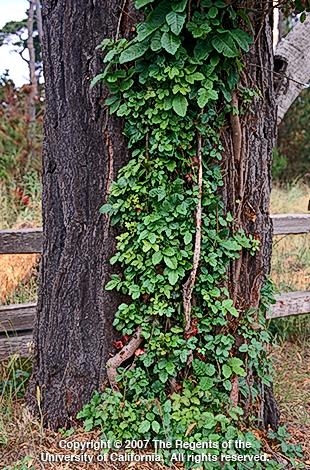
Careful removal of poison oak is essential, since many people are allergic to it and can develop skin rashes when they come in contact with it. Effective poison oak removal can be achieved through a combination of control methods. Hand pull or use a shovel or pick to remove the entire plant, including the roots. The best time to remove poison oak is early spring or late fall when soil is more likely to be moist.
When removing poison oak, wear protective clothing, including washable cotton gloves over plastic gloves. Wash all clothing thoroughly, including shoes, after exposure. In case of contact with poison oak, shower immediately after handling plants to reduce risk of absorption of plant oils into skin.
Several herbicides are available for poison oak control. Their effectiveness depends on timing of application. Always follow label instructions when applying herbicides.
For more information about chemical and nonchemical control of poison oak, see the UC IPM resource Pest Notes: Poison Oak.
This blog post was adapted from an article written by Joseph M. DiTomaso for the UC IPM Green Bulletin in August of 2013. You can read the article in its entirety at //ucanr.edu/blogs/blogcore/postdetail.cfm?postnum=13858